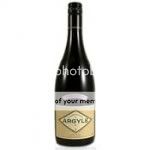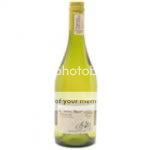A Wine a Day Keeps the Doctor Away
 Following the extravagance of the holiday season and February’s chocolate-driven decadence, it seems timely to look at the healthier side of wine. Let’s start with something called the ‘French Paradox’, namely how can a nation with a rich diet high in saturated fats like butter & goose fat have such a relatively low incidence of heart disease?
Following the extravagance of the holiday season and February’s chocolate-driven decadence, it seems timely to look at the healthier side of wine. Let’s start with something called the ‘French Paradox’, namely how can a nation with a rich diet high in saturated fats like butter & goose fat have such a relatively low incidence of heart disease?
Several studies have shown that a modest intake of alcohol, especially with food, can have heart healthy effects. Leaving aside various controversies about the different studies, it all comes down to polyphenols.
Polypheonols are chemical substances found in plants. Not only do they contain flavonoids (which contribute to pigmentation among other things), they also contain anti-oxidants which help eliminate free-radicals, molecules released during oxidation in the body and which can damage our cells.
Wine, particularly red wine, happens to be quite high in antioxidants, specifically resveratrol. There are all sorts of rumoured benefits to resveratrol and I’m not going to list them all here. But some research would seem to suggest that resveratrol (found in the skins, stems and seeds of grapes) offers some unique health benefits.
Of the more popular grape varieties, Pinot Noir is apparently the highest in resveratrol. But not just any Pinot Noir. The best are those coming from a cooler, damper climate. Think Oregon, BC or New Zealand instead of California, South Africa or Australia.
Yes, you can get resveratrol in the form of a supplement. But really, where’s the fun in that? I’m not going to crack open a pill bottle and serve my guests resveratrol supplement pills (2009 vintage) to pair with a wild mushroom risotto. So in the spirit of healthy living, here are some good Pinots for your consideration:
 I’ve always liked the Sileni Pinot Noir from New Zealand. It’s delicious and so well-priced for only $14.49 at your local MLCC. Be forewarned though, it’s really light. But it also has lots of delicious fruit flavours, drinks well on its own and also pairs with some lighter foods.
I’ve always liked the Sileni Pinot Noir from New Zealand. It’s delicious and so well-priced for only $14.49 at your local MLCC. Be forewarned though, it’s really light. But it also has lots of delicious fruit flavours, drinks well on its own and also pairs with some lighter foods.
 If you’re looking for something a bit richer, I’d suggest the Argyle Pinot Noir from Oregon’s Willamette Valley (available at the Kenaston Wine Market for $35). Lots of dark fruit flavours with hints of spice & roses make this medium-bodied wine worth trying. Pair it with something rich & powerful and pat yourself on the back for putting your health first.
If you’re looking for something a bit richer, I’d suggest the Argyle Pinot Noir from Oregon’s Willamette Valley (available at the Kenaston Wine Market for $35). Lots of dark fruit flavours with hints of spice & roses make this medium-bodied wine worth trying. Pair it with something rich & powerful and pat yourself on the back for putting your health first.
When it comes to healthy living, something else to consider is organic wine. The most widely accepted definition of this is wine made from grapes grown in accordance with organic farming principles. In a nutshell, it’s a more natural way of farming done with consideration for the health of the soil. Pests and diseases are countered with natural methods instead of chemicals.
 But I can help you with some organic wine recommendations. A new wine from an old standby is worth a try. The Bodegas Luzon Jumilla is made with organically-grown Monastrell grapes. And for only $13.19 (at your local MLCC), it’s a steal too. Packed with dark cherries, tannins and earthy flavours, it’s a good introduction to organic wines. Look for a friendly dragonfly on the label.
But I can help you with some organic wine recommendations. A new wine from an old standby is worth a try. The Bodegas Luzon Jumilla is made with organically-grown Monastrell grapes. And for only $13.19 (at your local MLCC), it’s a steal too. Packed with dark cherries, tannins and earthy flavours, it’s a good introduction to organic wines. Look for a friendly dragonfly on the label.
 If white wine is more your thing, I’d recommend the Cono Sur organic Chardonnay. It’s hard to miss – the word ‘organic’ is pretty prominent. For $12.99 (MLCC), this blows away most other Chardonnays in the under-$15 category. It’s organic, shows off some zippy fruit flavours and even comes with a screwtop closure (very handy when there’s no corkscrew around).
If white wine is more your thing, I’d recommend the Cono Sur organic Chardonnay. It’s hard to miss – the word ‘organic’ is pretty prominent. For $12.99 (MLCC), this blows away most other Chardonnays in the under-$15 category. It’s organic, shows off some zippy fruit flavours and even comes with a screwtop closure (very handy when there’s no corkscrew around).
Now is organic wine any tastier or better than non-organic wine? To be perfectly honest, I’ve never really found much of a difference when it comes to the flavour. But I really do believe in supporting producers who are making an effort to reduce the impact of their wine production. And with the price premium almost non-existent in some cases, it just makes sense.
If you’d like to look beyond these two options, virtually all of the private wine stores will offer a wide selection of organic wines, and the MLCC outlets have some good options as well. I’d suggest you head to your local wine store and speak to the staff. Tell them what you like to drink and see if there are any organic wines in the same style.
Above all, remember that moderation is still the key. A glass or two of Oregon Pinot Noir or organic Chardonnay might hold some benefits. And it will probably taste pretty good. But five or six glasses of the same won’t bring any added benefits, but will bring a whole host of other problems.
Further Reading
If you’d like to find out more about what organic farming principles are, I suggest you consult with the good folks at the Organic Food Council of Manitoba.
SavourWinnipeg.com wine editor Alec Stuart has been in and out of the wine industry since 1996 and has spent the last ten years handling wine education for the Kenaston Wine Market. If you have a question for Alec or a suggestion for a future feature, drop us a line.

No comments yet.